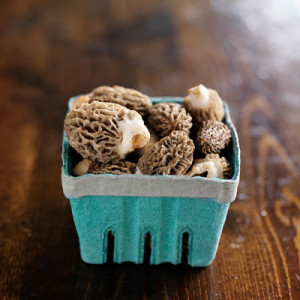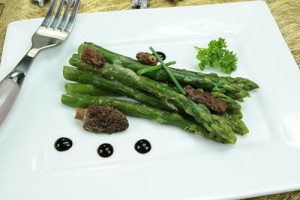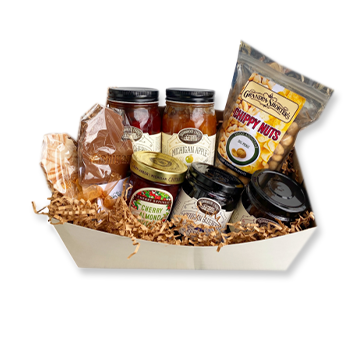Morel Mushrooms: A Northern Michigan Tradition
Hello, friends! Today on the blog we’re talking about morel mushrooms. Have you ever had them? I grew up on a rural farm here in Northern Michigan and every spring we would spend the evenings and weekends out on our property mushrooming. My dad always knew of the best spots in our area and he taught me at a young age to identify true morels versus the false. Plus, it was great fun to be in the woods on a new adventure each day. There is nothing quite like the peaceful quiet of the Northern Michigan woods. Plus, it’s great exercise!

If you’re new to morels here is some basic information about these tasty mushrooms –
- There are two different types of morels: Black morels which range from light brown all the way to black in color and Not Black morels which can often be white, yellow or grey colored.
- Morel season here in Northern Michigan typically starts during the last few weeks of April and goes through the month of May and early June, depending on the weather. Warmer weather and gentle rains typically mean a better morel harvest.
- Paper or mesh bags are best for gathering as they allow the morels to breath. Morels have a lot of moisture in them and plastic bags trap the moisture in which speeds up their decomposition.

(Photo Credit: Birds & Beyond)
The difference between true and false morels –
- Real morel’s are hollow inside. If you’re not sure the morels you’ve harvested are true morels, simply slice them in half. If the morel is hollow inside from the tip all the way down to the base, it is a true morel. A false morel is not hollow and looks to be ‘filled’ (see the photo above for an example). Some also say the taste between the true and false morel’s is different.
Growing up I was told to stay away from false morel’s and told to not to eat them. In in doubt, do not eat them. Poisonous mushrooms are no joke and if eaten you could become seriously ill. If you ever do eat a mushroom of any sort and you don’t feel well, go to the hospital immediately.
Where is the best place to harvest morels here in Northern Michigan?
- That’s a tricky question and hard to answer. Most seasoned mushroom hunters are not going to give up the info regarding the best spots. According to Michigan Morels, black morels often grow near ash, fruit and aspen trees, whereas white and yellow morels are often found near elm, fruit and maple trees. Your best bet? Learn your trees and start looking close to the ground.
What should you do with your finds? Well, first you will have to clean them. I like to soak mine in a sink filled with cool water and let them air dry on paper towels. My mom would freeze them and we would have them to eat throughout the winter months but from researching it seems best to allow them to dry as drying them preserves their flavor. If you head over to the Michigan Morel’s site, they mention several ways to dry and preserve them.
If you do not have any interest in harvesting your own morel mushrooms, but enjoy the taste of them, you are in luck. Those seasoned mushroom hunters that aren’t giving up the details on their favorite spots are sometimes found selling their extras. Morels are a delicacy here in Northern Michigan and are typically priced between $35 a pound for fresh morels and $90 a pound when dried. Delicious and expensive!

If you don’t want to buy an entire pound but want to try morels in various dishes, head to Boyne City’s Morel Mushroom Festival May 14th – May 17th. During the four day festival you can sample delicious appetizers and entrees throughout the weekend highlighting these delicious mushrooms. If you can’t make it to the festival, most higher end restaurants here in Northern Michigan usually showcase one or two dishes using morels during April, May and June so make sure you ask!
Looking for more information on morel mushrooms? Head over to these sites –




